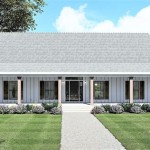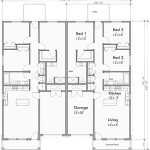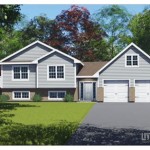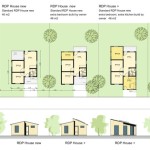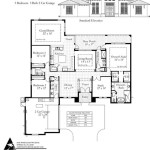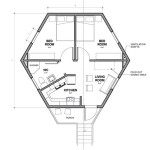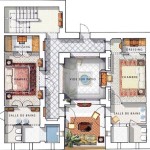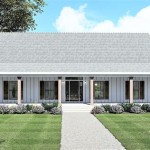House Plans For 3000 Sq Ft Single Story Extension Plan
Expanding a home's footprint with a 3000 sq ft single-story extension is a significant undertaking that requires meticulous planning and careful consideration of various factors. Whether the goal is to create more living space, accommodate a growing family, or enhance lifestyle amenities, a well-designed extension can dramatically improve a home's functionality and value. This article delves into key aspects of house plans for such an extension, providing insights into design considerations, functional layouts, and essential elements to ensure a successful project.
The process of creating house plans for a 3000 sq ft single-story extension typically involves several stages, beginning with assessing existing structural conditions and zoning regulations. An architect or qualified designer will evaluate the existing building's load-bearing capacity, foundation stability, and roof structure to determine the feasibility of adding a substantial extension. Simultaneously, it is crucial to research local building codes, setback requirements, and any homeowner association restrictions that might impact the project's scope and design.
Once preliminary assessments are complete, the design phase begins, focusing on the desired layout, room configurations, and overall architectural style. This phase involves creating detailed floor plans, elevations, and sections that illustrate the extension's appearance and spatial arrangement. Collaboration between the homeowner and the design professional is paramount during this stage to ensure that the extension meets the homeowner's specific needs and preferences while adhering to established building standards.
The structural integrity of the extension is a critical consideration. The design must incorporate appropriate structural elements, such as footings, foundations, walls, and roof supports, to ensure the extension's stability and resistance to environmental loads, like wind and snow. A structural engineer typically reviews the plans to verify that the design meets all applicable building codes and safety standards.
Key Considerations for Layout and Functionality
Designing a 3000 sq ft single-story extension presents a unique opportunity to create a space that seamlessly integrates with the existing home while offering distinct functionality. Careful consideration must be given to the layout to ensure optimal flow, natural light, and usability. Several key factors influence the design process:
Integration with Existing Structure: The extension's design should complement the existing home's architectural style and layout. The connection between the old and new portions of the house needs to be carefully planned to create a seamless transition. This might involve matching exterior materials, continuing rooflines, and ensuring that interior finishes blend harmoniously. The goal is to make the extension appear as though it was always part of the original design, rather than an afterthought.
Zoning and Spatial Arrangement: A 3000 sq ft extension allows for the creation of distinct zones within the new space. These zones might include a master suite with a luxurious bathroom and walk-in closet, a family room for relaxation, a home office for remote work, a dedicated entertainment area, or a large open-plan kitchen and dining area ideal for social gatherings. The arrangement of these zones should be carefully considered to optimize flow and minimize disruptions. For example, placing bedrooms away from noisy areas like the kitchen or home theater is crucial for ensuring privacy and tranquility.
Natural Light and Ventilation: Maximizing natural light and ventilation is essential for creating a comfortable and inviting living space. Large windows, skylights, and strategically placed doors can significantly enhance the interior environment. Consider the orientation of the extension to capture sunlight throughout the day. South-facing windows, for instance, can provide ample warmth in the winter, while east-facing windows are ideal for morning sunlight. Proper ventilation is also important for air quality and preventing moisture buildup. Operable windows, skylights that can be opened, and strategically placed vents can help to circulate fresh air throughout the extension.
Accessibility and Universal Design: Incorporating universal design principles into the extension can make it more accessible to people of all ages and abilities. This might include features like wider doorways, ramps instead of steps, grab bars in bathrooms, and lever-style door handles. These features not only improve accessibility for individuals with mobility limitations but also enhance the overall usability of the space for everyone.
Outdoor Connection: Integrating the extension with the outdoor environment can enhance the living experience. Consider adding a patio, deck, or sunroom that connects seamlessly to the interior space. Large sliding glass doors or French doors can provide easy access to outdoor areas and create a sense of openness and connection with nature. Landscaping can also play a crucial role in creating a cohesive and appealing outdoor space.
Essential Elements of a 3000 Sq Ft Single Story Extension
Beyond the overall layout, several essential elements contribute to the success of a 3000 sq ft single-story extension. These elements encompass various aspects of design and construction, from structural considerations to interior finishes.
Foundation and Structural Design: The foundation is the most critical element of any extension. It must be designed to support the weight of the new structure and withstand soil conditions. A structural engineer will determine the appropriate foundation type, whether it's a slab-on-grade, crawl space, or basement, based on soil analysis and local building codes. The structural design also includes framing, roofing, and wall systems that ensure the extension's stability and resistance to environmental factors.
Plumbing and Electrical Systems: Extending plumbing and electrical systems to the new addition requires careful planning and execution. A licensed plumber and electrician must assess the existing systems' capacity and determine the best way to integrate the new connections. This might involve upgrading the main electrical panel, adding new plumbing lines, and ensuring that all wiring and plumbing meet current building codes. Consider incorporating energy-efficient appliances and lighting fixtures to minimize energy consumption and reduce utility costs. Smart home technology, such as automated lighting controls and smart thermostats, can also enhance the extension's functionality and convenience.
HVAC System: Heating, ventilation, and air conditioning (HVAC) are crucial for maintaining a comfortable indoor environment. The existing HVAC system might need to be upgraded or supplemented to adequately heat and cool the new extension. A qualified HVAC technician can assess the existing system's capacity and recommend the best solution, whether it's adding a new zone to the existing system, installing a separate mini-split system, or upgrading the entire HVAC system. Energy-efficient HVAC systems can significantly reduce energy consumption and improve indoor air quality.
Roofing and Exterior Finishes: The roofing and exterior finishes should match the existing home's style and materials to create a cohesive appearance. Consider factors such as durability, weather resistance, and aesthetic appeal when selecting roofing materials, siding, windows, and doors. Proper insulation is also essential for maintaining energy efficiency and reducing noise transmission. The exterior design should also consider the surrounding landscape and integrate seamlessly with the existing property.
Interior Finishes and Fixtures: Interior finishes, such as flooring, wall coverings, and ceiling treatments, play a significant role in the overall aesthetic and functionality of the extension. Select materials that complement the architectural style and meet the specific needs of each space. For example, durable and easy-to-clean flooring is ideal for kitchens and bathrooms, while plush carpeting can add warmth and comfort to bedrooms and living rooms. Fixtures, such as lighting fixtures, faucets, and appliances, should be selected for their functionality, style, and energy efficiency.
Navigating the Planning and Permitting Process
Obtaining the necessary permits and approvals is a crucial step in the extension process. This typically involves submitting detailed plans and specifications to the local building department and obtaining approval from zoning boards and homeowner associations, if applicable. This process can be complex and time-consuming, so it is advisable to work with an experienced architect or contractor who is familiar with local regulations and procedures.
Understanding Local Building Codes: Local building codes dictate the standards for construction, plumbing, electrical, and mechanical systems. These codes are designed to ensure the safety and structural integrity of buildings. Familiarize yourself with the applicable building codes in your area and ensure that the plans meet all requirements. Failure to comply with building codes can result in delays, fines, and even the demolition of non-compliant structures.
Submitting Plans and Specifications: The building department typically requires detailed plans and specifications that illustrate the proposed extension's design, structural details, and mechanical systems. These plans must be prepared by a qualified architect or engineer and must comply with all applicable building codes. The submission process may also require supporting documentation, such as soil reports, energy calculations, and site plans.
Addressing Zoning Regulations: Zoning regulations dictate the permissible uses of land and the standards for building size, setbacks, and lot coverage. Ensure that the proposed extension complies with all applicable zoning regulations. This might involve obtaining variances or special use permits if the extension does not meet the zoning requirements. It is essential to consult with the local zoning department to understand the regulations and address any potential issues early in the planning process.
Homeowners Association (HOA) Approval: If the property is located within a homeowners association, it is necessary to obtain approval from the HOA before commencing construction. The HOA typically reviews plans to ensure that they comply with the association's architectural guidelines and covenants. This process can be time-consuming, so it is advisable to submit the plans well in advance of the planned start date.
Hiring a Qualified Contractor: Selecting a qualified and experienced contractor is essential for a successful extension project. Obtain bids from multiple contractors and carefully review their qualifications, experience, and references. Ensure that the contractor is licensed and insured and has a proven track record of completing similar projects. A detailed contract should be drawn up that outlines the scope of work, payment schedule, and project timeline.
Careful planning and execution are paramount to the success of a 3000 sq ft single-story extension. By considering the various design elements, functional layouts, and regulatory requirements, homeowners can create an addition that enhances their living space and adds value to their property.

Three Unit House Floor Plans 3300 Sq Ft

3d Floor Plans

5 Bedroom House Plan Examples

Charming One Story Home With Sun Room 4570

Single Level House Plans

Farm House Style Plan 3197 Corbett

Contemporary House Plan Under 3000 Square Feet With Finished Lower Level And Flexible Layout 365045ped Architectural Designs Plans

One Story Rustic Family House Plan With Stunning Exterior Floor Luxe Dreamer

20 4 Bedroom House Plans Ideas For N Kerala Styles

2 Bed Barndo Under 3000 Square Feet With A Home Office And Sunroom 135190gra Architectural Designs House Plans

